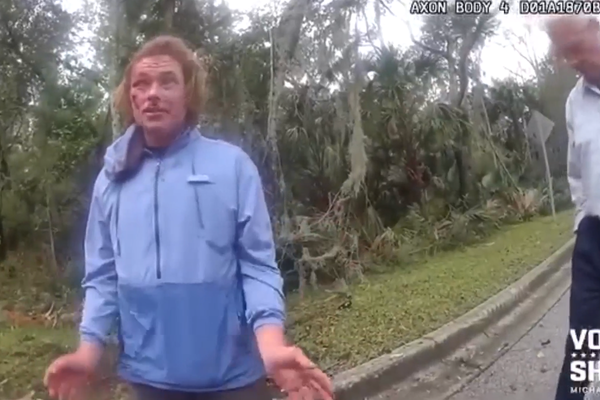
Virginia Trimble, 78, is a professor of physics and astronomy at the University of California, Irvine, whose astronomy career spans more than 50 years. She has studied the structure and evolution of stars, galaxies and the universe and published more than 1,000 works, including research papers in astronomy, astrophysics, the history of science and scientometrics – the field concerned with measuring scientific outputs – as well book reviews and biographies. She has co-edited The Sky Is for Everyone, a new collection of 37 autobiographical essays by distinguished female astronomers, including herself. Spanning a range of generations and nationalities, each tells of the barriers they have overcome to change the face of modern astronomy.
What got you into astronomy?
It wasn’t a love of stars: I grew up in Los Angeles very nearsighted and never saw the night sky. I really wanted to be an Egyptologist, but the University of California, Los Angeles [UCLA] didn’t have an archaeology major. My father looked at the catalogue and saw astronomy. I enrolled in an astronomy-math double degree but that got moved to the school of engineering, which wasn’t terribly welcoming to women, so I switched to astronomy-physics. I started at UCLA in 1961 in the gifted students’ programme.
In 1962, you were featured in a Life magazine article, Behind a Lovely Face, a 180 IQ. Where did that lead?
As a result, I was approached by a publicity agency looking for some way to bring up the ratings of what was going to be the last year of the Twilight Zone programmes. In my year being Miss Twilight Zone, I toured 10 cities where television ratings were taken, doing newspaper, radio and television interviews. The shtick was that I was reading the scripts for accuracy. Some of my suggestions were taken, for instance that there is a difference between a solar system and a galaxy. It brought in some extra, much-needed pennies.
You started graduate school at the prestigious California Institute of Technology, or Caltech, in 1964 when you were not quite 21. You were awarded your joint master’s in physics and astronomy in 1965 and your PhD in astronomy in 1968. Was it hard getting in?
I hadn’t quite realised that they admitted women only under exceptional circumstances. My exceptional circumstance was that my fellowship required me to go someplace other than my undergraduate institution and I didn’t want to leave home (Caltech and UCLA were the only two places in southern California with astronomy majors). There were 14 women on the entire campus when I arrived, and the two women who arrived ahead of me in astronomy both came with their husbands.
It seems Caltech was a hotbed of seduction. You became friendly with the physicist Richard Feynman by modelling for him…
I had quickly noticed in both my undergraduate and graduate classes there were a lot of nice men – students and faculty. The astronomy professor who became my PhD adviser – Guido Münch – and I were lovers for about three years until I left Caltech.
Feynman was learning to draw and he’d seen me walking across campus and decided: “I want that one.” He saw Münch coming out of the building I had gone into and went up to him and said: “I’m hunting, perhaps you know the quarry.” Münch brought Feynman to my office and introduced us.
Feynman paid me $5.50 an hour (a lot then) plus all the physics I could swallow. His studio was in the basement of his house in Altadena and I used to go there Tuesday evenings for a couple of hours. Sometimes I posed nude. Sometimes we cuddled, but innocently. I recall once he suggested we cuddle on the couch, and I said I didn’t think we really wanted to do that. His wife quite often brought us orange juice and cookies, and I didn’t want to be naked on the couch with Feynman when she did.
Wasn’t it creepy to be involved with these professors? There was a big power imbalance.
I enjoyed the company of men who liked me. I was never aware of a power imbalance; I could always just walk away. Of course, it would get us all fired today!
You have published hundreds of research papers, but perhaps your colleagues know you best for your amusing, must-read annual summaries of astrophysics research, which you undertook for 16 years starting in 1991. How deliberate was the humour?
I couldn’t help [the jokes]. I am told that if we who are on the autism spectrum – and I would say I am slightly Aspergerish – simply describe things the way we see them, it strikes many other people as amusing. But some of the footnotes were designed to be funny. I described distinguished colleagues by pseudonyms such as “the rotund musician” or “the keen amateur dentist”. I made enemies both by not citing people and by citing them, because quite often I picked out something from their paper which was not what they had primarily intended. It was said that each time [a summary] came out you could see the Princeton astronomers tiptoeing into the library late at night to see if they had been mentioned.
How have things changed for female astronomers?
The first women in astronomy came in through a father, brother or husband, and some almost certainly married in order to do science. Then came being a human computer [which involved doing calculations by hand, and later machine]. These women didn’t necessarily fall in love with astronomy but it was an interesting job that a college-educated woman could do that wasn’t teaching or nursing. Then in the US, driven by post-Sputnik concerns, graduate programmes in space-related fields grew rapidly. They were so desperate to expand they even hired women faculty! Today roughly 30-40% of astronomy graduate students are female, though that lessens up the hierarchy.
Which female astronomers have been overlooked for a Nobel prize?
Cecilia Payne-Gaposchkin discovered that stars are made of hydrogen and helium. But she wasn’t believed until it was confirmed by men. Jocelyn Bell (later Bell Burnell) was a PhD student when she participated in the discovery of pulsars but the resultant share of the Nobel prize was awarded only to her male supervisor. In contrast, the male PhD student who recognised the signal from the first binary pulsar shared the prize with his adviser.
Various female astronomers in the book note some shockingly sexist behaviour and at least one details being sexually harassed in an elevator. You must have experienced some of this in your working life, but you don’t seem too riled about men behaving badly…
Clearly “men behaving badly” has been a major problem for some of my colleagues, and I don’t want to seem to be defending law-breakers. I don’t feel that I have ever been sexually harassed. I am friends with some senior male scientists who’ve been accused of being seriously inappropriate and I just find it hard to believe. I think perhaps some things can feel very different to different women.
What words of advice would you give young women who want an astronomy career?
Nearly everybody says: follow your passion. My view is: find something you’re good enough at to earn your living and do it.
The Sky Is for Everyone, edited by Virginia Trimble and David A Weintraub, is published by Princeton University Press (£25). To support the Guardian and Observer order your copy at guardianbookshop.com. Delivery charges may apply







